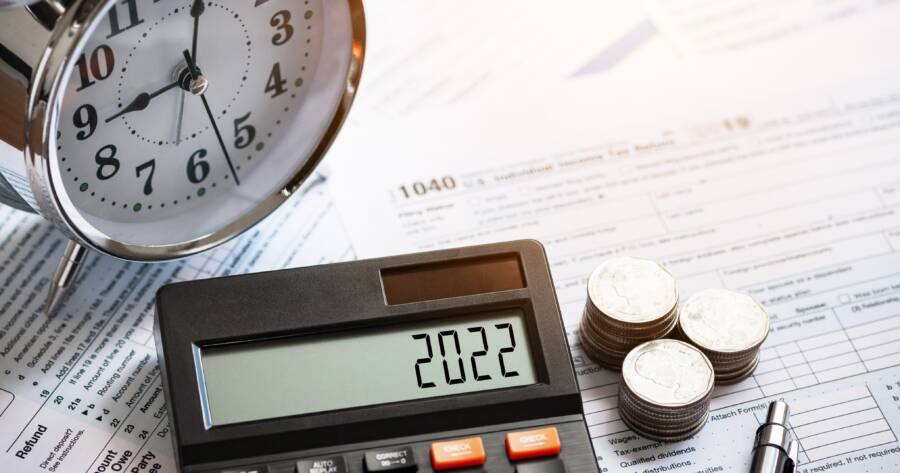The Internal Revenue Service (IRS) just released updated information about the tax brackets for 2022. The new brackets have been adjusted for inflation, which has spiked up drastically during the pandemic. The 2022 income tax brackets will have the largest increase since Congress totally revamped the tax code in 2017.
Existing Tax Brackets Bumped by 3%
The overall tax rates all remain the same. The minimum rate is 10%, for those making much less than minimum wage. The top rate is still 37%, and now applies to any income over $539,900. However, every bracket is getting bumped up by roughly 3% from its previous level. Here’s what the breakdown looks like for 2022.
- 37% for incomes over $539,900 ($647,850 when filing jointly)
- 35% for incomes over $215,950 ($431,900 when filing jointly)
- 32% for incomes over $170,050 ($340,100 when filing jointly)
- 24% for incomes over $89,075 ($178,150 when filing jointly)
- 22% for incomes over $41,775 ($83,550 when filing jointly)
- 12% for incomes over $10,275 ($20,550 when filing jointly)
- 10% for incomes of $10,275 or less ($20,550 when filing jointly)
Tax Rates vs. Tax Brackets
Remember that those numbers are not flat tax rates. You don’t have to pay 37% of your income in taxes just because you make over $539,900. They are more like tax pockets, a concept that is explained much more thoroughly in this article.
You marginal tax rate can also be adjusted up and down, affected by more than simply your income. Tax deductions and tax credits can both work to reduce your overall taxable income.
Is 3% Enough?
Recent calculations actually put the inflation rate at well over 5%. Some analysts put it as high as 6.4%, which is a historically high amount. Unfortunately, it appears that the IRS hasn’t given the tax brackets quite enough of a boost to compensate.
While you may end up paying a bit less tax in 2022 as a result of the bracket bump, everything else in your life has gotten more expensive too. It’s unlikely (for most people) that the potential tax savings will recoup the increased cost of necessary living expenses.
The Standard Deduction is Increasing Too
Along with the 3% bump in tax brackets (which you should not confuse as a 3% increase in your taxes, because it’s not), there’s also an increase to the standard deduction claimed by most taxpayers. It’s going up $400, from $12,550 to $12,950. The same increase applies to married couples filing jointly, who will see an $800 increase (from $25,100 to $25,900).
That means you’ll have to earn a bit more money before you actually start owning taxes — a welcome relief for those with incomes on the lower ends of the scale.
Odds and Ends
The IRS also tacked on a couple more notable changes. For starters, you can now exclude up to $16,000 in gifts (up $1,000 from 2021). The same inflationary increases also apply to 401(k) contributions, meaning the maximum annual contribution is now a bit higher than it used to be.
Congress could also create more changes. They are currently proposing an extra tax on millionaires and billionaires to help fund the Build Back Better Act. This extra tax would only affect the top 1% of earners in America. However, there’s certainly no guarantee that it will pass into law (and actually could fail entirely — or undergo massive changes before it passes).








